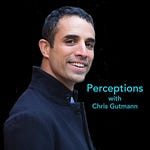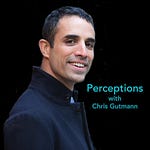Reasons as to why people turn out this way or that way as well as justifications as to why some are affected by certain events whilst others aren’t, have always befuddled me.
Alcoholism, aggression, cutthroat ambition, success or failure are explained thus, ‘He’s like that because of that thing that happened to him in the past, that’s why he’s so successful’, or ‘He’s like that because of that thing that happened to him in the past, that’s why he’s such a failure’, or get this, ‘She’s just so damn tough, nothing phases her’, compared with, ‘Well, you know, she just wasn’t tough enough’. Upon hearing these explanations, two questions keep popping up in my mind, ‘How do you know this, and why are you saying it?’
Previous circumstances or individual characteristics appear to contextualise success or lack thereof, as well as certain features such as ruthlessness or timidity, thus defining an organism with the finishing touch of a chisel. Perhaps assessing the accuracy of a causal connection is irrelevant to some in that moment and the conjecture serves to satiate a desire for explanations allowing us to navigate and move on, i.e. the reason may not be the cause, but it makes sense, so let’s just leave at that, shall we. Not only does this strike me as an oversimplification but a way of thwarting further inquiry.
Counterexamples seemed to add to the conundrum. Over the years, I’ve met victims of physical abuse, poverty, neglect and even war, who turned out to be responsible, caring adults and parents. Why didn’t they succumb to what had happened to them? Did adverse events ricochet off them? On getting to know them better, I learnt that they were in fact deeply hurt and marked by what had happened to them and many still carried the experience around with them like an inhabiter only visible to his residence. Nevertheless, it was plain to see that they were coping with life and didn’t harm themselves or others.
Stories of individuals excelling in the face of seemingly impossible odds are commonplace. Art Tatum, became one of the greatest jazz pianists even though he was born blind. Django Reinhardt developed into one of the fastest and most innovative guitarists despite losing two fingers on his left hand in a fire. You’d think eyesight and a complete set of fingers were requirements for these vocations, and no one would bat an eyelid if they had pursued different careers. Stories about Oprah Winfrey’s success in spite of her many hardships or Theodor Roosevelt’s cultivation of strength in the face of innate physical weakness are sources of immense inspiration, even to me. These individuals were able to transcend their circumstances to succeed. The notion that you are where you are today because of your choices and not your conditions may indeed bring about a sense of empowerment. It is well-meaning but how accurate is it and how generalizable?
In the 1970s a small group of researchers whose desire for explanations was not easily appeased, began inquiring into the naturally occurring phenomenon of resilience. The study of risk targeted cohorts of children subjected to severe adversity such as extreme poverty, maltreatment, neglect, family discord, mentally ill parents or violent neighbourhoods. These risk factors were strong predictors for developmental or psychological problems such as delinquency, substance abuse, learning and behaviour difficulties, schizophrenia, anxiety or depression. Within the cohort, a small group of children seemed to cope and do well despite direct and prolonged exposure to severe adversity. They were identified as resilient. As the attention shifted from risk to resilience, some researchers and media outlets characterised these children as invulnerable, bullet-proof superheroes. However, the research did not stop there and asked the following question, ‘What makes a difference in the lives of these children?’ A profound question seeking to identify protective factors which may counteract risk effects. Ann Masten describes this as the first wave of resilience research (Masten 2001; Wright, Masten & Narayan, 2003).
Norman Garmezy, one of the pioneers of this research, indicated that the likelihood of a child not coping is increased if it faces an accumulation of risk factors, e.g. a violent neighbourhood and extreme poverty and maternal mental illness and paternal absence. The danger of cumulative risk renders the need for choices versus conditions to be seen within the realm of probability. As risk mounts, resilience is more likely to be compromised. Emmy Werner and Ruth Smith, who conducted the seminal Kauai Longitudinal Study, where 698 individuals were observed from birth to adulthood for 30 years, explained that even the most resilient individual will succumb in the face of a myriad of adversities. Multiple risk factors really ought to ring alarm bells. Acknowledging the interaction of an individual in the environment, Garmezy advocated against resilience to mean invulnerable, as it would suggest an unassailable individual that can’t be hurt, instead of one that bends under pressure and then recoils to attain prior functioning after the adversity dissipates. A kind of functioning flexibility that is bolstered by certain individual characteristics, supportive families and friends and external support systems (Garmezy, 1993; Werner, 1993).
Obtaining a multi-factorial response from nature and nurture to find out what allows some individuals to stand up again and again in the face of adversity whilst others cave in, lays out the complexity of the human sciences. Although it may be true that her toughness, his ingenuity or that particular accident were formative, it is more accurate to suppose that these are factors, which contributed to the outcome in some way along with many other factors. The complexity affords considerations of many causes, perspectives and solutions to a variety of problems. In this sense, the same tree looks different from a variety of angles, has many roots and many branches. Bearing this in mind, Karl Popper (2014) narrowed down the aim of the human sciences accordingly, “It is to trace the unintended social repercussions of intentional human actions” (Pg. 472). Endeavour to provide individuals with protective factors, which were previously identified in others, and track the progress. But why?
Garmezy compellingly highlighted the importance for all of us to pay attention to the phenomenon of resilience in order to maximize opportunities for the individual by cultivating their resources. Resilience is unexpected, difficult to control and yet worth all the toil, tears and sweat because none of us can know the potential that lies hidden in an unassuming child.
I’m indebted to the pioneers of this research as well as other writers, researchers and practitioners working to improve the lives of young people today.
Bibliography
Garmezy, N., 1993. Children in poverty: Resilience despite risk. Psychiatry, 56(1), pp.127-136.
Masten, A.S., 2001. Ordinary magic: Resilience processes in development. American psychologist, 56(3), p.227.
Popper, K., 2014. Conjectures and refutations: The growth of scientific knowledge. routledge.
Werner, E.E., 1993. Risk, resilience, and recovery: Perspectives from the Kauai Longitudinal Study. Development and psychopathology, 5(4), pp.503-515.
Wright, M.O.D., Masten, A.S. and Narayan, A.J., 2013. Resilience processes in development: Four waves of research on positive adaptation in the context of adversity. In Handbook of resilience in children (pp. 15-37). Springer, Boston, MA.







